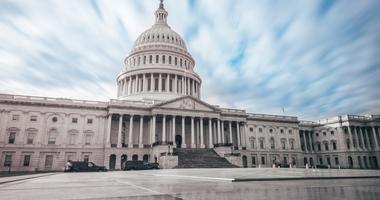
How Energy Efficiency Can Fight the Climate Crisis
Energy efficiency is a vital and often undervalued way to cut the greenhouse gas emissions driving the climate crisis.
4 minute readWe know that to fight the climate crisis and win, economies the world over must transition as quickly and equitably as possible away from fossil fuels to a world powered by clean, renewable energy. But the path to that future isn’t as simple as turning off all the coal-fired power plants and turning on more and more wind turbines and solar panels. Though that’s certainly a big part of it.
No, the future we’re fighting for necessitates far more invention. Greater change. Bigger, but manageable, updates to the status quo.
And one that doesn’t get nearly enough shine in the typical climate conversation is the what. It’s not exclusively about how we power things, you see, but what we’re powering. We need to grow and change in that department too.
We’re talking about the energy efficiency of the appliances, buildings, and infrastructure we’re sending all that energy to.
Energy efficiency is a vital – and often undervalued – way to cut the greenhouse gas emissions driving the climate crisis and create the change we need for a better, more sustainable future.
In fact, it plays a far greater role in the equation than you might at first think.
What is Energy Efficiency?
The US Department of Energy explains it like this: “Energy efficiency is the use of less energy to perform the same task or produce the same result. Energy-efficient homes and buildings use less energy to heat, cool, and run appliances and electronics, and energy-efficient manufacturing facilities use less energy to produce goods.”
From replacing outdated heating and cooling systems with newer models and incandescent light bulbs with LEDs to installing effective insulation and windows designed to prevent air from escaping or coming into the house, “energy efficiency” is a broadly applied term to refer to a host of updates meant to decrease the energy usage of a building or other infrastructure.
When we use less energy, we need to produce less energy, which is particularly important while we burn fossil fuels like coal, oil, and natural gas for electricity generation. It will also be important as we decarbonize electricity generation, as we could save billions by investing in less energy infrastructure. Thus, energy efficiency plays a crucial role in mitigating the carbon emissions driving the climate crisis. By reducing the overall demand for energy, it in turn leads to fewer greenhouse gases being released into the atmosphere.
Efficient buildings and infrastructure are also generally better suited for integrating renewable energy sources like solar and wind power. This ultimately further reduces reliance on fossil fuels in the long term, creating a positive feedback loop of sorts that allows more and more buildings to run on renewable energy.
“Energy efficiency is one of the easiest and most cost-effective ways to combat climate change, reduce energy costs for consumers, and improve the competitiveness of US businesses,” the DOE continues. “Energy efficiency is also a vital component in achieving net-zero emissions of carbon dioxide through decarbonization.”
Energy Efficiency is Vital to Our Climate Goals
About that last part. In addition to the many benefits of energy efficiency outlined below, experts agree that it is also essential to reaching net-zero emissions goals everywhere and holding global temperature rise to no more than 1.5 degrees Celsius.
How essential? The potential for emissions savings through energy efficiency is truly significant.
“Energy efficiency could deliver a reduction in annual energy-related emissions of 3.5 Gt CO2-eq (12%) compared with 2017 levels, delivering over 40% of the abatement required to be in line with the Paris Agreement,” the International Energy Agency writes. “Combined with renewable energy and other measures, energy efficiency is therefore indispensable to achieving global climate targets.”
The Benefits are Numerous
In addition to its necessity as a vehicle to reach our climate goals, energy efficiency measures are a win-win across the board for consumers and the broader public alike.
Right up top, energy efficiency often translates into to lower energy bills for individuals and businesses. Energy-efficient buildings simply cost less to heat and cool, and greater efficiency also allows industry and manufacturing to make products at lower cost.
Reduced reliance on fossil fuels also means less air pollution, leading to health benefits and environmental improvements, particularly for the low-income and frontline communities that too often bear the brunt of industrial pollution.
Energy-efficient buildings and appliances require less electricity, putting less strain on the power grid than outdated infrastructure and making it more resilient and less prone to power disruptions.
It also creates jobs. Lots of them.
“As of 2022, more than 2.1 million Americans have jobs in energy efficiency,” the National Resources Defense Council explains. “With greater investments, like those in the Inflation Reduction Act, we’re already seeing new jobs in research, production, installation, and sales.”
Energy efficiency is a powerful tool in the fight against the climate crisis. It's a cost-effective, readily available solution with numerous benefits that go beyond even emission reductions. By adopting energy-efficient practices in our daily lives and across various sectors, we can make a very real contribution to a cleaner and more sustainable climate future.
What’s Next?
By embracing energy efficiency, from our personal choices to large-scale industrial and manufacturing upgrades, we can make a significant difference in the fight against the climate crisis.
But where to start?
For individuals ready to make a difference in their communities for a more energy-efficient future, you can learn more about the transformative power of the Inflation Reduction Act (IRA), Bipartisan Infrastructure Law (BIL), and other federal and state incentives at our upcoming Climate Reality Leadership Corps training in New York City.
The IRA and BIL offer significant funding opportunities for households, communities, and organizations – but many people are still unaware of how to access electrification and energy efficiency incentives or require assistance to translate technical jargon and navigate complicated applications.
From April 12-14, we’ll be working to demystify the process of making the IRA and BIL work for you and so much more at our training in New York City.
As we’re fond of saying: Give us three days. We’ll give you the tools to change the world.




